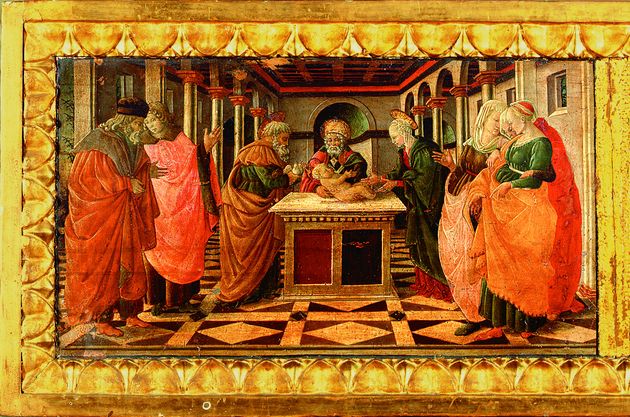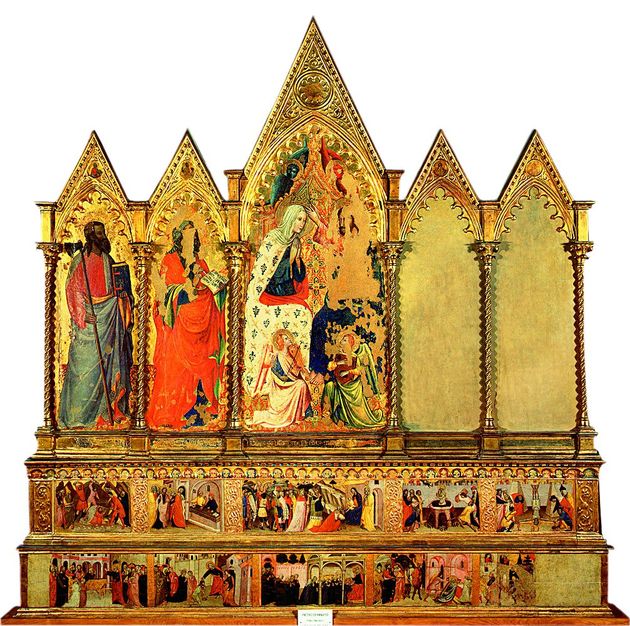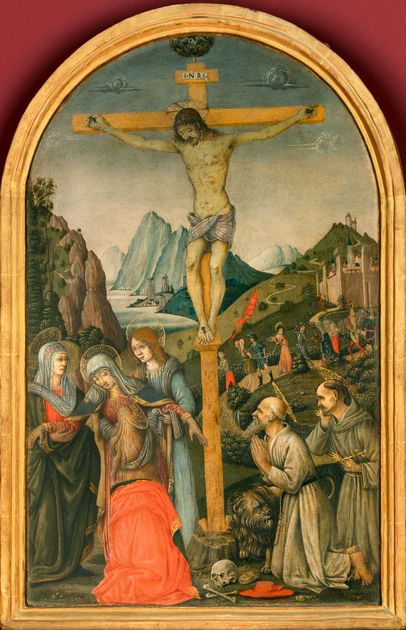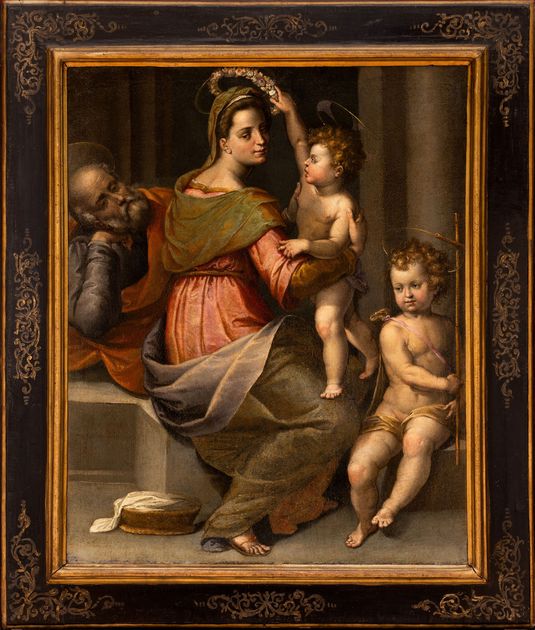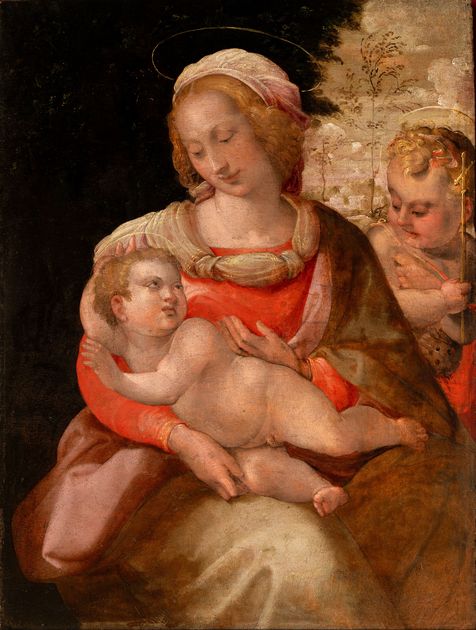The pupil of Bicci di Lorenzo and the collaborator of Masaccio in Pisa, this eclectic painter, halfway between Gothic tradition and Renaissance innovation, was also a fair copier. Perhaps for this reason the Olivetan monks of the Badia delle Sacca abbey near Prato asked him to copy for the high altar of their church the famous polyptych by Lorenzo Monaco for the Monte Oliveto abbey (now in the Accademia gallery in Florence), which had been completed in 1411. With meticulous draughtsmanship and a precious bright colour-scheme, di Giusto faithfully reproduced its main figures (curiously adapting the face of St. Taddeus, which he transformed into that of St. Margaret) and also probably part of the predella (the Monte Oliveto predella is lost but it is likely that di Giusto copied at least the Nativity from it, with the famous atmospheric night scene typical of Lorenzo Monaco). However he also added more recent references, copying the Imposition of John the Baptist’s name by Fra Angelico (part of a predella now in the SanMarcoMuseum in Florence). The painting of this important work, completed in 1435, probably favoured the assignment to Andrea di Giusto of another prestigious commission around 1438: the completion of the frescoes in the chapel of the Assumption in the Cathedral, which had been left unfinished by Paolo Uccello.
In the same section From late Gothic to the Renaissance there are also the polyptyches by Giovanni da Milano, Lorenzo Monaco and Pietro di Miniato.











